Jun 04, 2025
Author:Lisa Martinez
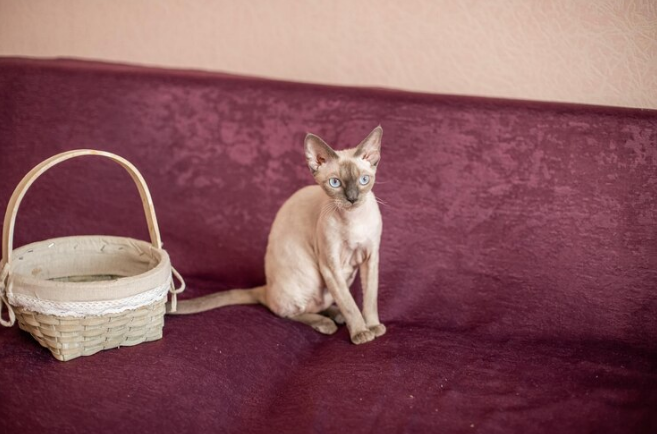
Ever heard someone call the Balinese cat 'too vocal' or 'too needy'? Let’s set the record straight. This breed isn’t high-maintenance—it’s high-connection. Behind those sapphire eyes is a cat that craves communication, thrives on structure, and turns affection into a lifestyle. But if you’re expecting a mellow, independent house cat that blends into the background, you’re going to be caught off guard.
This article breaks down what actually makes a Balinese tick—from their energy levels to their grooming needs—and why so many people completely misjudge this sleek, silky stunner.
Here’s what we’ll break down:
● Temperament and personality quirks that set them apart
● How their Siamese roots shape their behavior
● The truth about grooming that surprises most people
● Daily care routines that keep them calm and content
● Common health concerns and how to manage them early
● Whether they’re a good fit for homes with kids or other pets
● How to keep them mentally and emotionally engaged (without overcomplicating your day)
If you’ve been told this breed is 'too much,' it’s probably because they weren’t managed right. Let’s fix that.
Balinese cats don’t quietly settle into the background. They step into the center of the room and hold it on their terms. Highly social and incredibly , these cats stay emotionally tuned in to the people and animals around them. You won’t need to guess where they stand. If they want attention, they’ll walk up, make eye contact, and speak—literally. Their voice is clear, direct, and used often. You’re not dealing with a passive companion. You’re working with a communicative animal that expects reciprocity.
They thrive in structured, interactive homes where routines are clear and stimulation is steady. Leave them out of the loop, and they won’t sit quietly. They’ll tell you. These cats value presence. They’ll follow you room to room—not out of separation anxiety, but because they treat you like part of their territory.
Balinese cats also show a surprising mix of elegance and goofiness. One moment, they’re leaping onto high shelves with quiet precision. Next, they’re batting bottle caps across the floor like a toddler testing physics.
Here’s the point:
● They’re emotionally expressive
● Highly intelligent with fast pattern recognition
● Need structured routines to stay mentally balanced
● Will vocalize their needs consistently
● Combine athletic grace with bursts of playful chaos
This breed isn't for someone who wants a passive, low-engagement pet. It’s for someone who’s ready for an ongoing relationship.
Balinese cats trace their behavioral instincts directly to their Siamese ancestry. The two breeds share more than a look—they share a neurological and sensory wiring that drives their most recognizable traits.
At their core, Balinese cats inherit the hyper-social orientation of Siamese cats. This means they form tight bonds with human companions, often fixating on a primary person in the household. This trait isn’t casual. It reflects a high degree of emotional memory and recognition, similar to what you see in working breeds of dogs.
Their vocal patterns also carry over. The tonal range and volume are nearly identical to Siamese cats, but Balinese tend to modulate their voice with more variation depending on emotional context. This isn’t random meowing. It’s situational communication—attention-seeking, food-related, or anxiety-driven vocalizations delivered with clear intent.
Energy levels remain elevated throughout adulthood. Siamese cats are known for retaining kitten-like play behavior well past maturity. Balinese inherit this trait fully. You’ll see frequent bursts of athleticism, pacing, interactive play, and repetitive exploratory behavior, especially in indoor environments with high ceilings or vertical access points.
Their intelligence profile also mirrors Siamese cats. Expect strong spatial awareness, quick learning through environmental cues, and high responsiveness to patterns like feeding times, door openings, and even tone of voice.
To summarize their inherited behavior blueprint:
● Form strong, selective attachments to household members
● Use vocal tones to express specific needs or moods
● Engage in high-frequency play with a strong need for vertical space
● Adapt quickly to routines and environmental changes through observational learning
● Display sensitivity to stimuli—including light, sound, and physical contact
What looks like a quirky personality is, in fact, the result of strong inherited traits honed through decades of selective breeding. Balinese behavior isn’t random—it’s precise, consistent, and traceable.

Silky coat. Long tail plume. Elegant frame. Most people see a Balinese cat and assume high-maintenance grooming is part of the deal. It’s not.
Here’s the surprising truth: Balinese cats don’t mat easily, don’t shed heavily, and don’t require daily brushing. That flowing coat is the result of a lack of an undercoat—a structural difference that cuts down on tangles and loose fur.
This single trait flips conventional assumptions on their head. Most long-haired breeds have dense double coats that trap loose hairs, trap dander, and mat around pressure points like the hind legs and chest. Balinese cats skip that mess entirely.
The coat behaves more like that of a short-haired breed. It stays close to the body, moves freely, and resists buildup. That means:
● No excessive clumping
● No intense de-shedding sessions
● No constant vacuuming around the house
A weekly brushing session with a soft-bristle brush is more than enough to keep their coat in peak condition. Add to that their self-cleaning instinct—an inherited behavior from their Siamese lineage—and you get a cat that stays polished without professional help. The misconception stems from appearance. But biology tells a different story. This breed looks plush, but behaves streamlined.
Balinese cats don’t do well with chaos. They’re intelligent, vocal, and sensitive to change. What keeps them calm isn’t luxury—it’s structure. Their nervous systems respond best to consistent routines with defined triggers and predictable interactions.
Here’s how to build that into your day:
● Fixed feeding times: Feed at the same time every morning and evening. Skipping or delaying meals ramps up anxiety. Their internal clock is sharp, and they’ll expect punctuality.
● Dedicated interaction windows: Block out 15–20 minutes twice a day for focused play. Use interactive toys or puzzles—something that activates both body and mind. This reduces attention-seeking behavior later.
● Environmental zones: Set clear boundaries for where they eat, sleep, and play. Use consistent cues like mats, platforms, or scratching posts to reinforce these zones. Balinese cats are anchored to physical patterns.
● Grooming rhythm: Brush them once or twice a week at the same time of day. They’ll associate the routine with safety and relaxation if the experience is consistent.
● Sleep-friendly lighting cues: Dim lights gradually in the evening. Their rest cycle links closely to ambient lighting, and abrupt shifts can trigger pacing or vocalization.
These aren’t optional extras. They’re core to behavioral stability. Small changes in rhythm can throw them off, while small consistencies can reinforce calm.
Most Balinese cats stay healthy for years, but they do carry a few genetic risks worth knowing. When you catch these early—and respond with the right habits—you lower the odds of stress, vet bills, and bigger health issues down the line.
Here’s what to watch for and how to handle it.
● Amyloidosis: This condition shows up when abnormal proteins build up in the liver or kidneys. It usually creeps in silently—until your cat starts acting sluggish or stops showing interest in food. If that ever happens, it’s not a 'wait and see' moment. Book a vet visit and ask about bloodwork.
● Progressive Retinal Atrophy (PRA): Balinese cats can inherit this eye issue, which gradually affects their vision. One of the first signs? They start bumping into things at night or seem unsure in dim lighting. There’s no cure, but early detection can slow progression and help you adjust their environment safely.
● Dental Issues: This breed has a reputation for developing gum problems like gingivitis. If their breath smells off or they resist being touched near the mouth, it’s time for a cleaning. A quick brush a few times a week and regular check-ins with your vet can save a lot of discomfort later.
● Dilated Cardiomyopathy: In some Balinese cats, the heart can enlarge and lose its ability to pump efficiently. Signs include fatigue, slow movement, or labored breathing. Vets can catch this with routine heart screenings—don’t skip the annuals.
● Separation Stress: They don’t just want companionship—they need it. Long hours alone can lead to anxious pacing, vocal outbursts, or destructive behavior. Rotate enrichment toys, build in sound cues, and try interactive tools that let you check in and engage when you’re away.
Build a Daily Routine That Protects Their Health
You don’t need a complicated system. Just stick to these core habits:
● Stay on a consistent vet schedule. Don’t wait for symptoms. Annual checkups spot changes you can’t see yet.
● Keep vaccines current. This breed responds well to a regular vaccine plan that shields them from common feline illnesses.
● Feed with purpose. Stick to portion-controlled, nutrient-dense meals that support joint, heart, and dental health.
● Keep their mind busy. A mentally stimulated Balinese cat is less likely to fall into destructive or anxious patterns. Rotate toys, add vertical spaces, and set interaction cues.
A little consistency now goes a long way. You’re not just preventing disease—you’re setting the stage for a longer, calmer, healthier life.
Balinese cats adapt well to busy households when their space and signals are respected. They’re naturally curious, highly interactive, and often seek social stimulation, which makes them compatible with children and multi-pet environments.
With kids, the key is age-appropriate behavior. These cats tolerate gentle handling and thrive when children engage them in active play. Sudden grabs or loud, erratic behavior can trigger stress, so supervision is important during early interactions.
In homes with other pets, Balinese cats typically integrate smoothly, especially when introductions follow a structured pace. They favor companionship and often form alliances with dogs or other cats, particularly if the other animal isn’t dominant or territorial. Their success in these environments depends on predictability, consistent access to retreat zones, and gradual introductions. When those conditions are met, they contribute, not clash, with household energy.
Balinese cats need mental and emotional stimulation built into the rhythm of the day. Their sharp intelligence and social drive demand more than passive environments, but that doesn’t mean your routine needs a full overhaul.
● Start with structure. These cats learn quickly, so anchor your daily interactions to fixed cues. Feeding time, play sessions, grooming, and resting should follow a consistent sequence. Predictability keeps their behavior stable and their stress levels low.
● Interactive play matters. Short bursts of focused engagement—like chasing toys on strings or solving treat puzzles—build trust and tire them out. WOpet’s smart feeders with portion scheduling and built-in treat timing add that extra layer of interaction without adding pressure to your calendar. You set the rules once, and the device handles the consistency.
● Visual stimulation helps. A window perch with bird activity outside or a motion-based toy that activates when they approach gives them something to track and react to between human interactions. Devices like WOpet’s treat-dispensing cameras combine visual monitoring with interaction, allowing your cat to hear your voice and receive treats, especially useful when you’re not home.
● Avoid overcorrection. These cats respond better to redirection than punishment. If they’re acting out, they’re likely bored or overstimulated. Having automated feeders and interactive tech in place helps channel their energy productively.
WOpet’s tools aren’t extras—they’re built to reduce friction in the care process. Balinese cats stay content when routines are predictable, communication remains two-way, and their space offers chances to move, listen, and respond throughout the day.
Balinese cats don’t demand perfection—they need presence, predictability, and the right kind of interaction. Now, you know how to meet those needs with the structure that works for both of you. You’ve cut through the myths and picked up the habits that actually shape a calm, balanced cat.
You also know where stress creeps in—and how to cut it off at the source. Whether it’s scheduling, grooming, health, or engagement, your strategy no longer depends on guesswork. That puts you ahead of the curve.
Here’s what that means going forward:
● You can identify and support the behavioral patterns that keep your Balinese cat emotionally stable
● You’re no longer overthinking grooming—because you know exactly how low-maintenance it really is
● You’ve built a daily care framework that keeps your cat engaged without stealing time from your schedule
● You can spot early health red flags and take action before they grow into problems
● You understand how to blend your cat into family life, including kids and other pets, with less friction
● You’ve added tech-driven tools like WOpet to your routine that reinforce consistency even when you’re not around
Smart pet care isn’t about doing more. It’s about doing the right things—on time, every time. That’s where WOpet fits in.
Popular Post

What to Feed a Sick Dog With No Appetite? [2025 Guide]
May 16, 2023
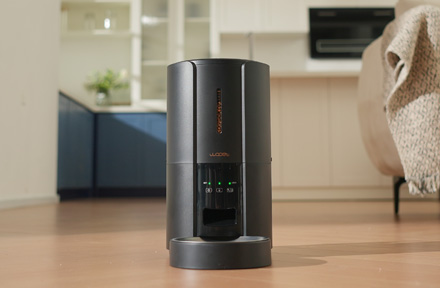
Troubleshooting Common Issues with Automatic Pet Feeders: Tips & Tricks for Pet Owners
Oct 26, 2023
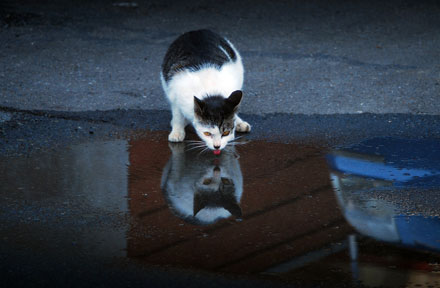
Why Does My Cat Cough After Drinking Water? 8 Potential Reasons
Mar 13, 2023
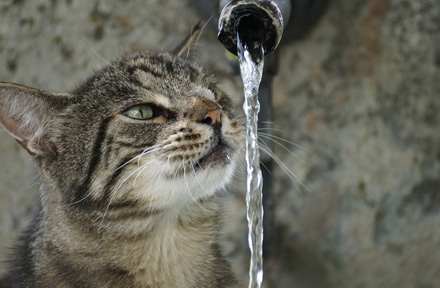
Why is My Cat Throwing up Water? Top 5 Causes Here
Feb 08, 2023
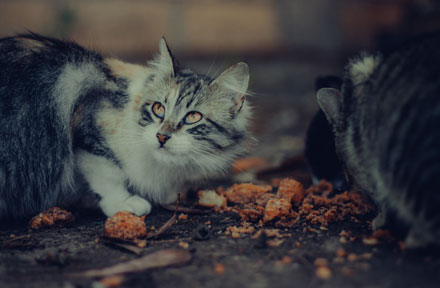
My Cat Only Eats A Little at A Time - What to Do?
Feb 27, 2023
$99.99
$129.99
Copyright © 2025 WOPET. All Rights Reserved.